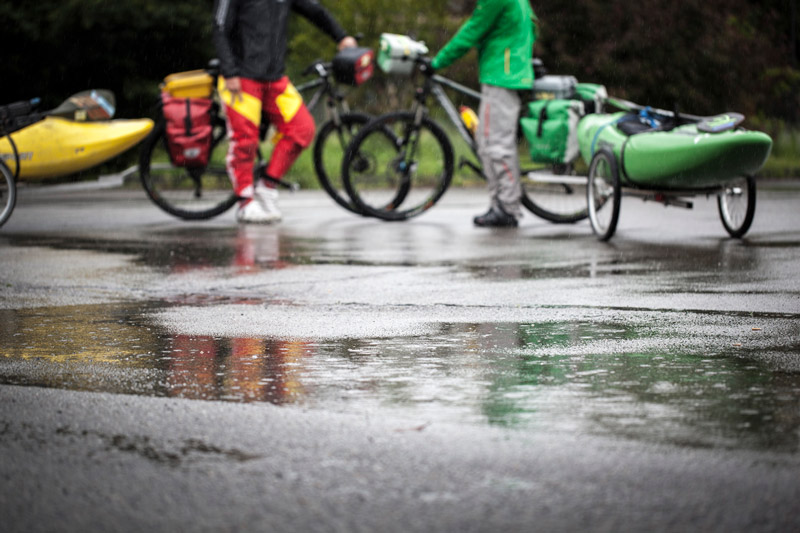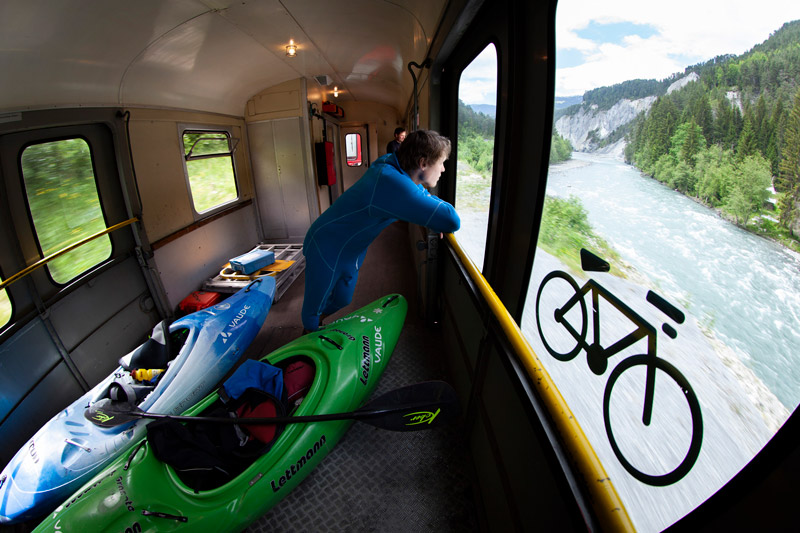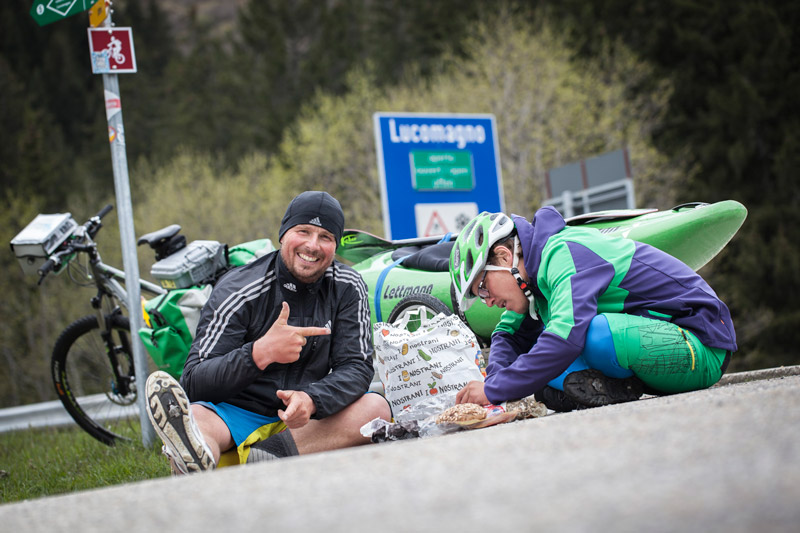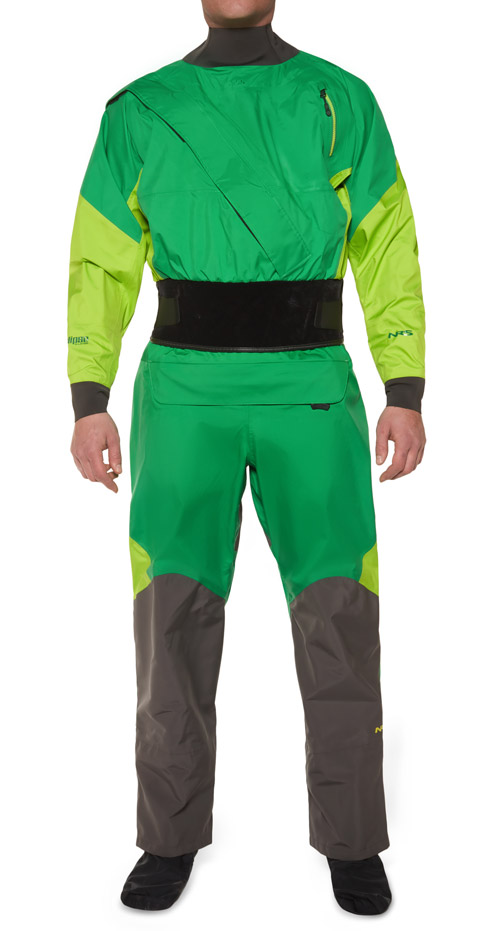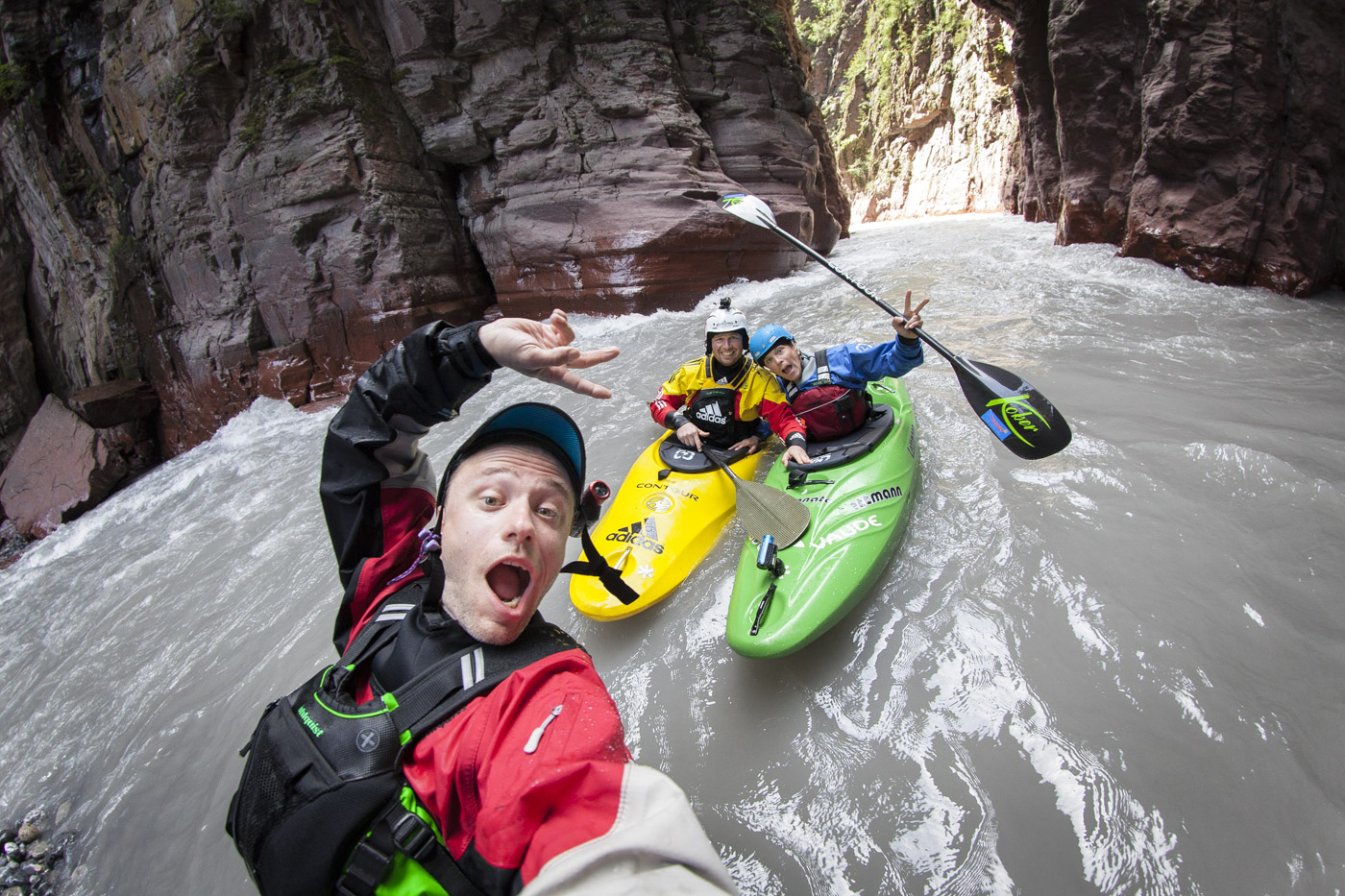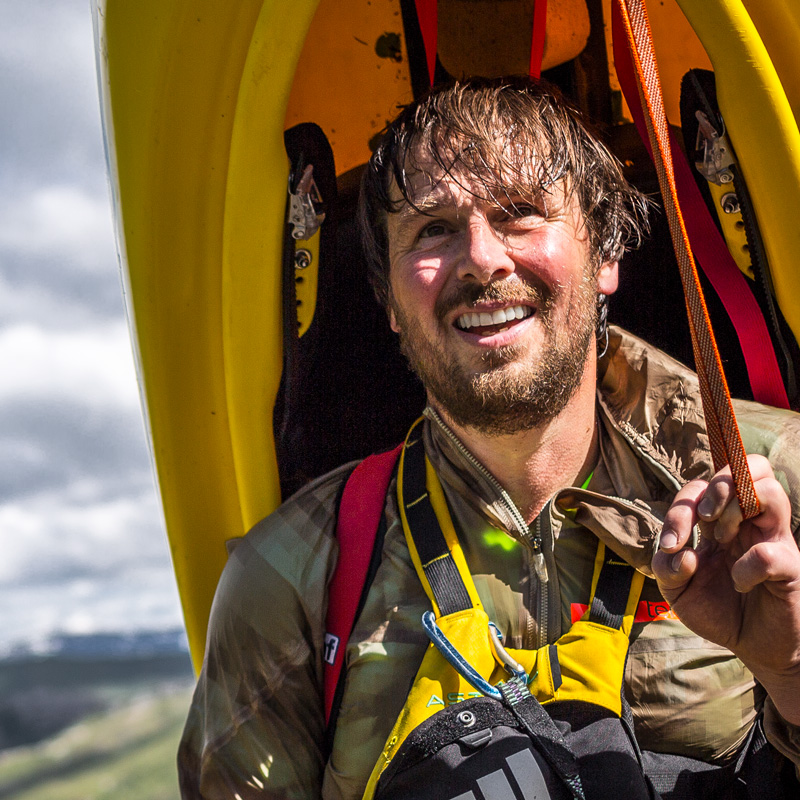It’s easy to become a Bike2Boater – you just do it! Here are some tips and tricks for the right gear and a good mindset.
#pedaltopaddle
Before you go
1 Get a bike and a trailer: For dragging your kayak, you don’t need a sturdy full suspension mountain bike. It’s better to choose a 29-inch cross or touring bike for speed and comfort. Trailer: we are using a REACHA STREET 24.
The lighter, the better. See more infos below.


2 Plan your route: You can go wherever your legs of steel will take you! Try to find areas with different rivers or stretches close to each other, so you have options regarding water levels. Don’t follow the biggest roads, even if they seem faster or more direct. Try to find smaller mountain passes with fewer cars…but also make sure you don’t end up carrying your bike and trailer separately because it’s too steep. Calculate ample time for biking and time for rest and recovery. Your legs will do most of the work on the bike, but you don’t want to end up getting in your boat completely exhausted. Be sure not to end up on serious whitewater with heavy arms and low batteries.
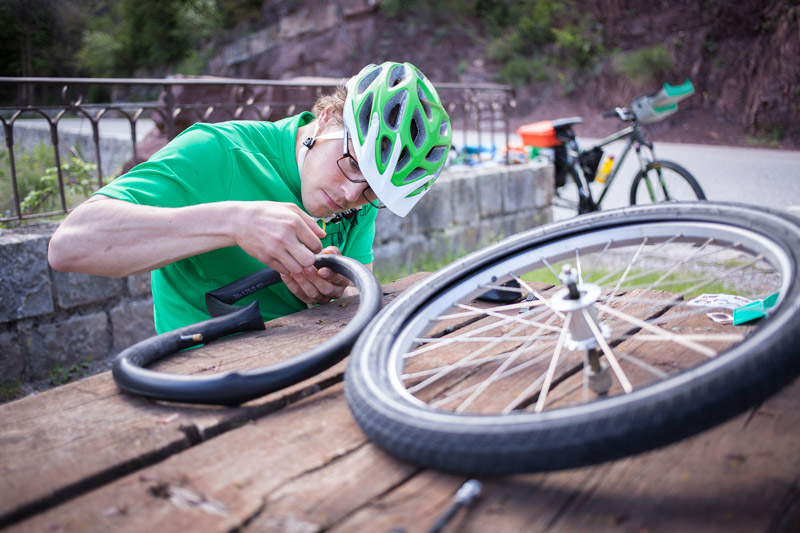
3 Equipment: You will need all-weather clothing, but pack smart! Lightweight is the key to success. Share a tent and camp kitchen to save weight. If you don’t know the region, an outdoor GPS might be handy. Other must-haves: helmet, front and rear lights, water-proof bike packs/paniers and a multi-tool for minor repairs.
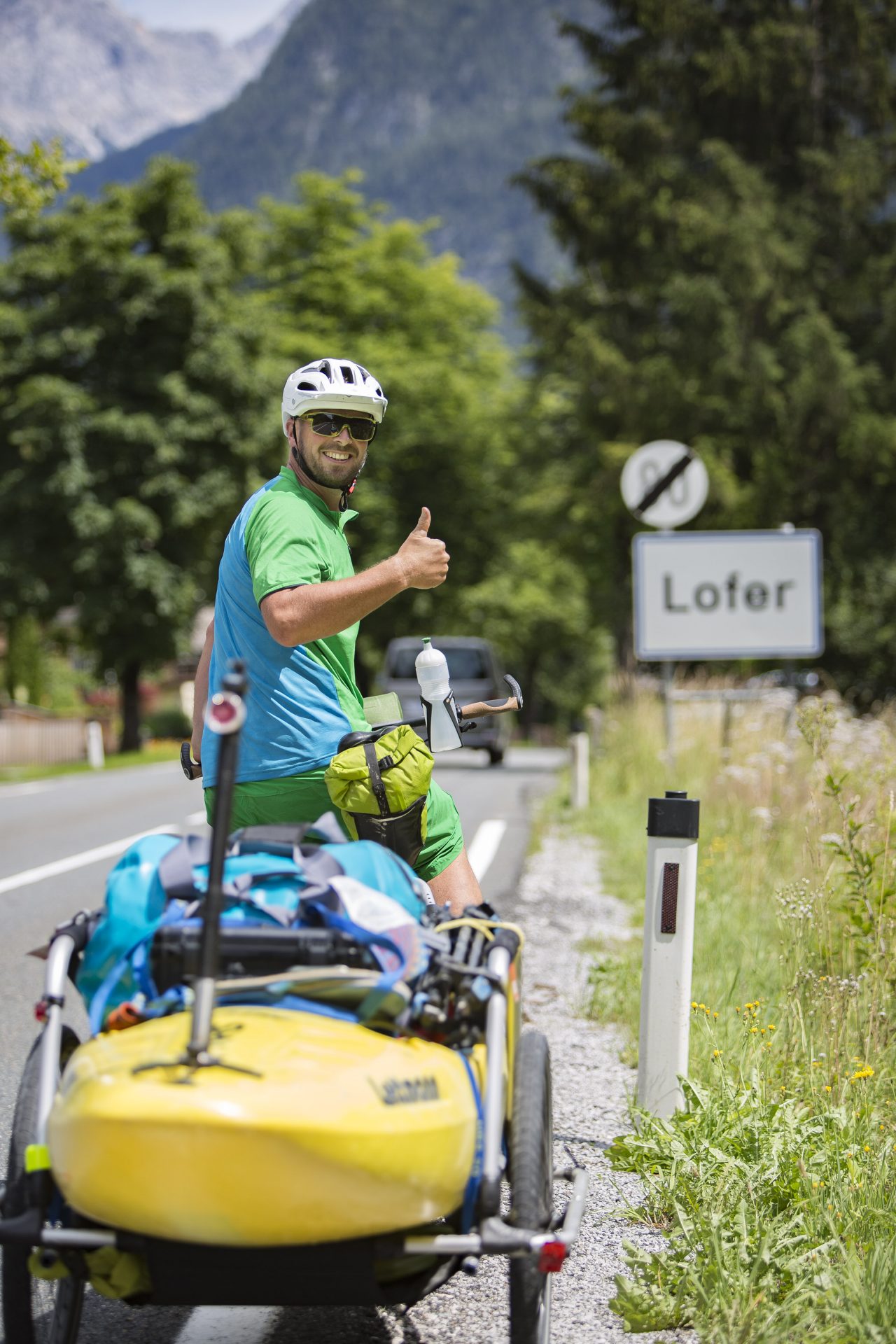
4 Get to know your equipment + GET FIT: Handling a fully loaded bike trailer can be tricky and above all it is quite exhausting. So, get in shape before the trip starts! Some training on the bike at home will let you test if all you gear keeps you dry, fits well and doesn’t rub on wrong places.
On the road

1 Valuables: Remember, you can’t lock things away in the car, you will always have to keep valuables with you – even on the water. So less is best! Or, you can hide an extra small bag somewhere in the bushes near your bike when paddling. Just make sure nobody finds.

2 Body recovery: You’ll sweat a lot during the day and lose lots of electrolytes. Make sure your body gets back what it gave. Drink a lot! If you’re feeling thirsty, it’s too late. Maybe bring some magnesia tablets too.

3 Lubricate: Sitting on the saddle for hours can hurt! Saddle sores can be incredibly painful, but are avoidable even for those who ride for hours each day. Wear padded saddle shorts that fit properly and rinse them at the end of every day to remove sweat. Pro tip: use chamois creme (Hirschtalkum) before you get on the bike. Everyday.
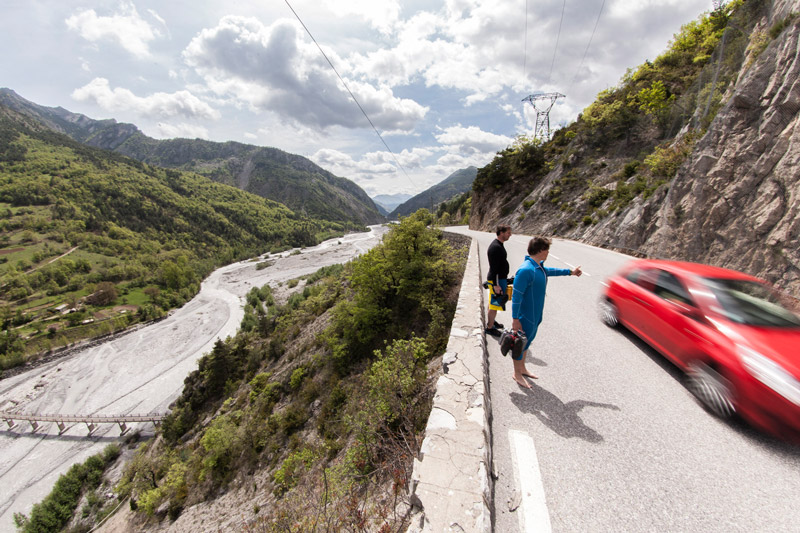
4 Shuttle: Shuttle take some time since EVERYBODY must get back to their bike somehow. You have many options though: run, walk, hitchhike. If you’re in an area with good public transport or train support, use it.

5 Food: Only bring what you need for the day and make sure you know where the next grocery store is located on your route. You’ll need to plan more precise than usual, otherwise you’ll carry extra weight. Buy dried stuff (lighter) like noodles and rice, muesli and bars – and limit the fresh food you haul around. Also, plan your water sources…will you find fresh water at your next camp? Carrying it sucks but is sometimes necessary!

6 Cars need to overtake: Ride single file when traveling on busy roads and leave some space in between each bike – this way cars can overtake more safely and don’t need to overtake the whole team in one go. This will limit conversation…but that guy in front of you has nothing good to say anyways, right?
Equipment
On the road
To keep you rolling
Solid gear is important. Vaude supports us with all kinds of functional equipment like shirts and shorts, wind jackets, rain jackets, waterproof pants – and very much needed… padded cycling underpants. You can get some ideas for equipment for cycling tours on the Vaude website. Click here.

Useful: A bike shoe with click pedals.
This ‚packing tutorial‘ might help you.
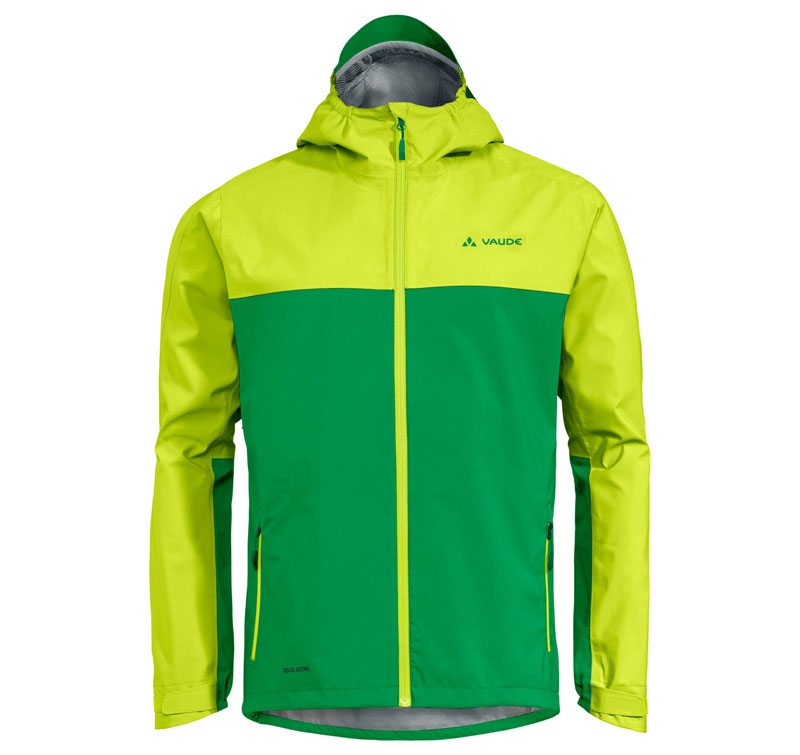
A good rain jacket could come in handy!
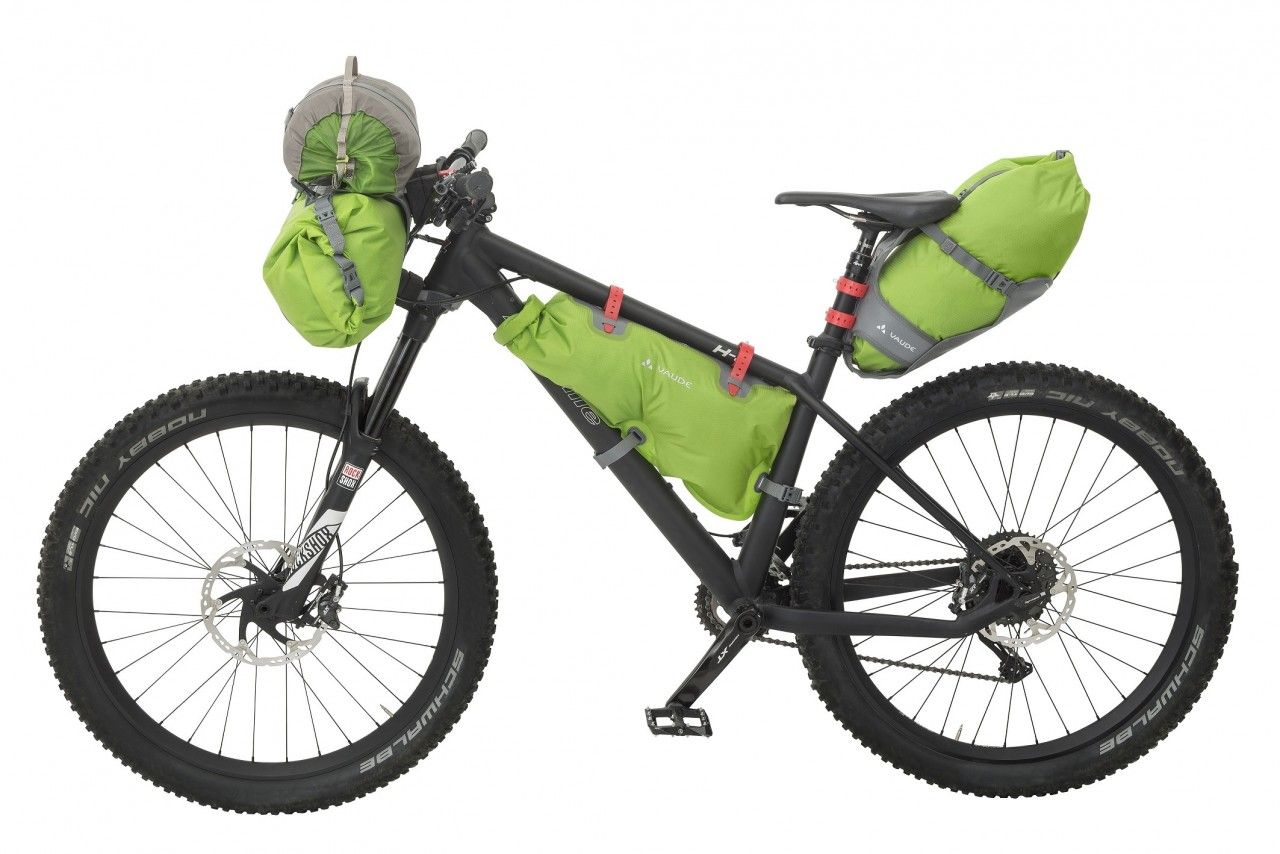
You can attach bags directly to your bike…
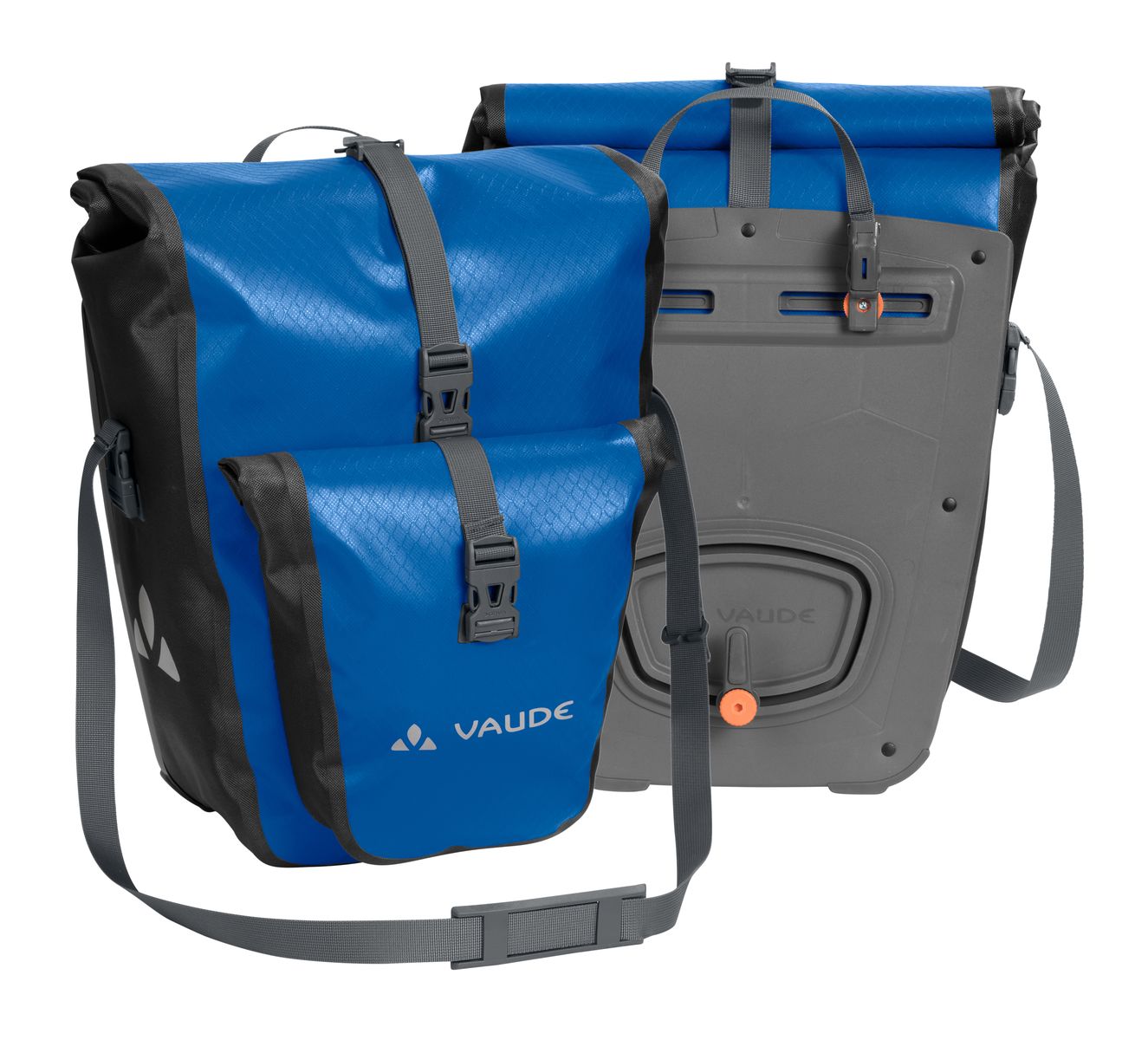
… or attach the bike bags to rear rack. See all Vaude bike bags on www.vaude.com.

On our Bike2Boat trip to Tyrol in 2020 we were using the Reacha Sport Street 24. With its light aluminum frame and an already integrated loading handle (bow), the reacha trailer can be easy assembled at the bicycle with the bike connector. Additional second bow is perfect to tow more luggage to the reacha or to transport bigger sport gear. Thanks to its 24” wheels, it remains quiet even at higher speeds and long distance.
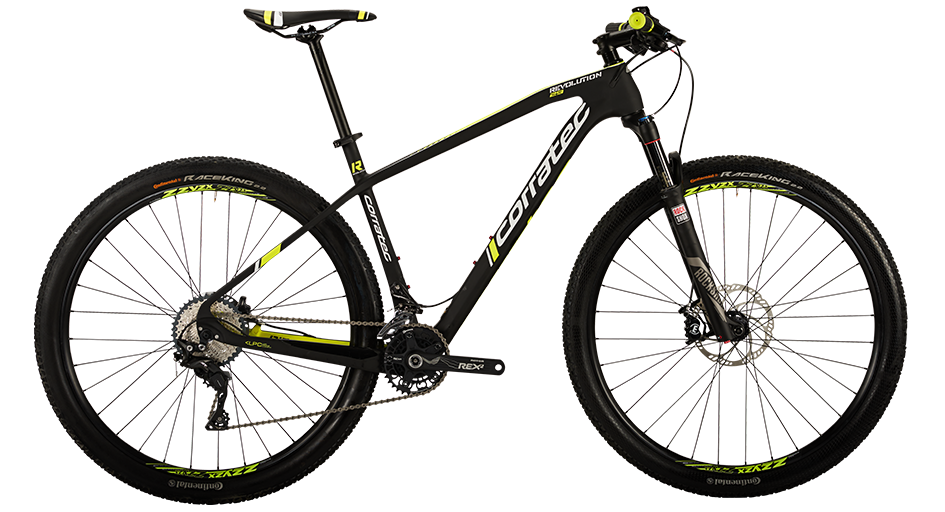
Fast and sturdy. A good choice is a 29-inch trekking bike. Consider a back rack to attach panniers.

We like Spade Kayaks. More info here: www.spadekayaks.com

For a bääääm foreward stroke: www.lettmann.de
Hanging out
To keep you comfy, warm & dry
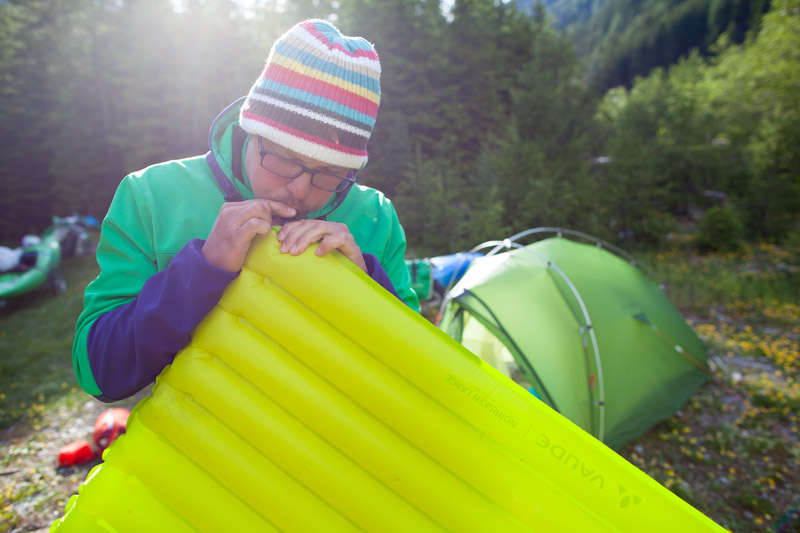
Mattress & Sleeping bag: Size and insulation will depend on your destination. Norway may require warmer gear than the south of Spain. But always important: a little weight as possible! Visit the Vaude website for a selection of products: www.vaude.com.

Bring a warm jacket for the evenings!
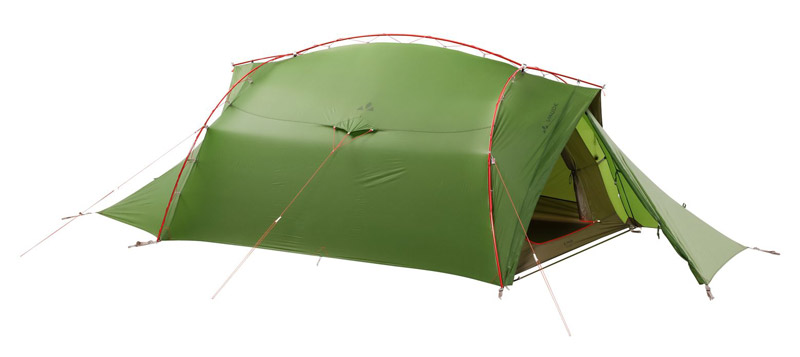
Vaude’s tent guide will help you to chose the right (and light) tent. Visit tent guide here.
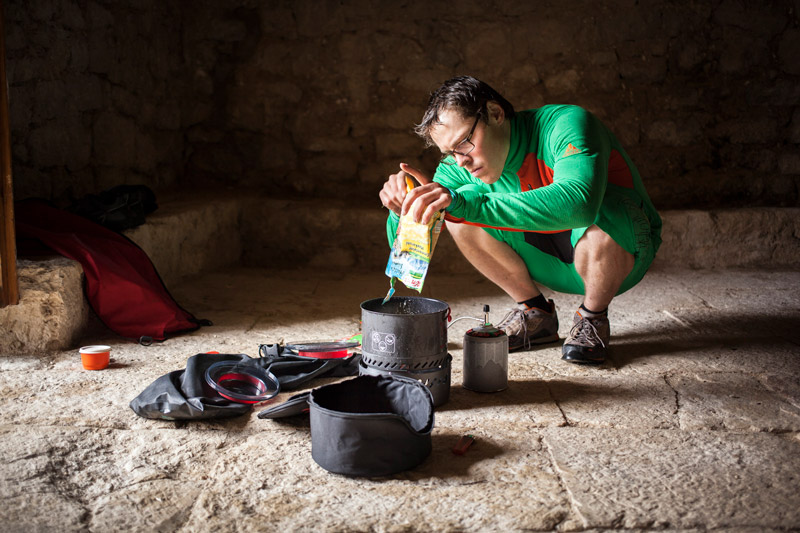
A light weight camp stove is a must. We cook with Primus.

